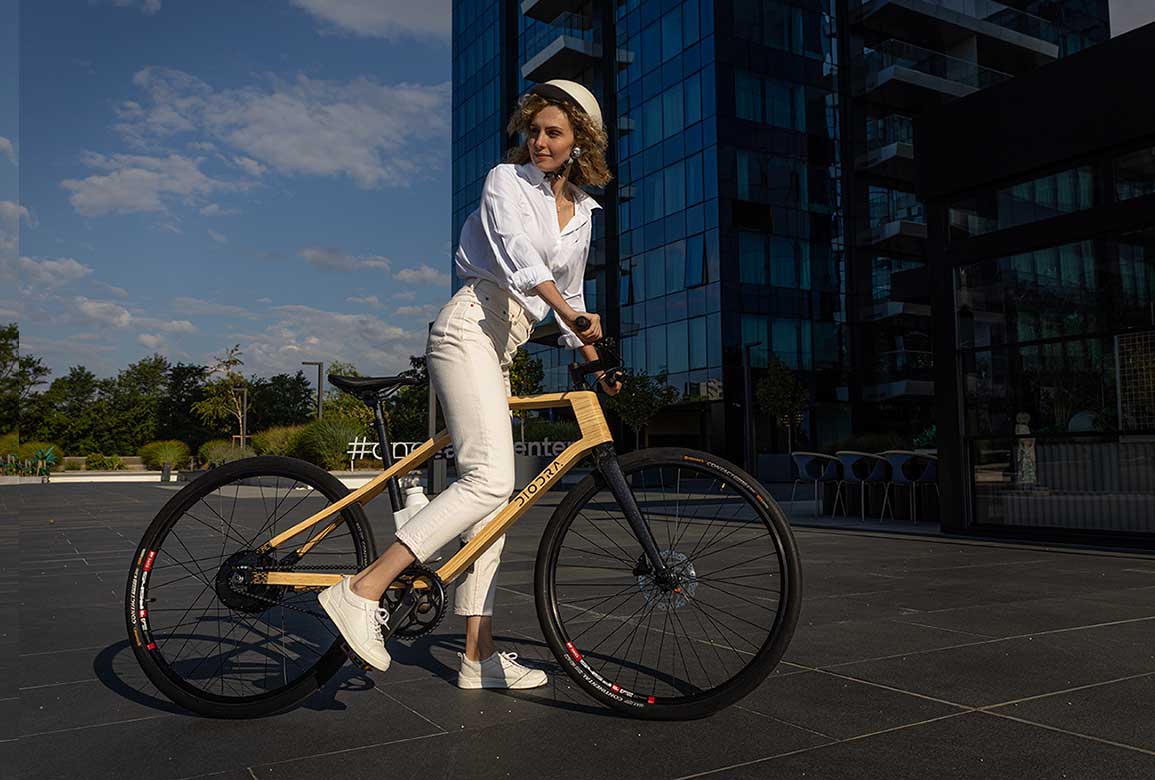Sign up for daily news updates from CleanTechnica on email. Or follow us on Google News!
Diodra, a Romania-based bicycle company, claims its forthcoming S3 e-bike, which is built on a laminated bamboo frame, is the world’s lightest e-bike. However, even at a weight of just 15 kilograms (33 lb), the S3 may not actually be the world’s lightest e-bike, but it’s most likely to be the world’s lightest bamboo e-bike, which is still an accomplishment, and I’d wager that it’s one of the best looking bamboo bikes as well.
Bamboo bicycles, and even bamboo e-bikes, are nothing new (a quick web search for bamboo bikes or e-bikes will unearth a lot of them, although it turns out that we’ve only written about them a grand total of three times, and the last time was 10 years ago), but they certainly aren’t very common to see on the road.
The early versions of bamboo bikes were mostly using ‘raw’ bamboo as-is for the tubes comprising the frame, and were either lashed together and epoxied with no metal joining them, or the bamboo tubes were inserted into steel joints to form the frame. That seemed to yield strong and flexible bikes, but when compared with a conventional bike frame, most of them had that DIY arts and crafts look to them, which is not for everybody. There are still bamboo bikes built like that for sale, which do seem to retain a very ‘organic’ look to them, as the frame is actually recognizable as being bamboo.
However, another approach to building bamboo bicycles is with laminated bamboo, which results in a multilayered material that can then be cut into the shape of a bike frame. And to be honest, as much as I like the appearance of the ‘raw’ bamboo frames, the laminated bamboo frames look to be much stronger and reliable, and the material can be more easily worked into whatever shape is desired, with the ability to be crafted easier into a lot more potential designs than the raw frames. And that’s where bikes like the Diodra S3 (and its acoustic non-electric sibling) come in, as they offer a very fresh modern look due to the use of the laminated bamboo.

The Diodra S3 features a 250W rear hub motor that will help propel it to a top pedal-assist speed of 25 km/h (15.5 mph) in the EU and 20 mph (32 km/h) in the US, and incorporates front and rear disc brakes for stopping power. The cables are routed through the frame for a very clean look, and the frame itself integrates adjustable dropouts, which Diodra says allows riders to acheive “perfect chain tension, seamless belt drive compatibility, and precise brake alignment.”
The 300Wh battery is said to be capable of up to 100 km (63 miles), but as far as its location on the bike goes, it’s a bit different than most e-bikes — the battery packs are inside the motor itself and not on the frame. Charging of the S3 is done by connecting the charger to the rear wheel, and Diodra says the charge time is 3.5 hours. As far as the battery packs, which appear to rotate with the motor (though I could be mistaken), I’m a bit skeptical as to their durability, but I can see why they chose this approach rather than a frame-mounted battery.
The S3 is currently being offered as a pre-order for €2,199, which is €700 off the full price, and the company aims to have the first models delivered in about 3 months. Diodra also offers the same frame without an electric motor, named the M8, which features an 8-speed internal gear hub and which is currently available for pre-order for €1,599. An optional upgrade to a Gates carbon belt drive is available for an additional €200.
As far as that claim to be the “world’s lightest e-bike,” I personally know of at least one e-bike that weighs just under 29 pounds (~13 kg), which I’ll be publishing a review of in a couple of weeks, and a quick web search turned up a few other featherweight e-bikes lighter than the S3. So perhaps what Diodra is actually claiming is that the S3 is the world’s lightest bamboo or wooden e-bike, and maybe that’s true. In any case, at 15 kilograms, it’s still pretty dang light for an e-bike, and an eye-catching one as well. Find out more at the Diodra website.
Images courtesy of Diodra.
Have a tip for CleanTechnica? Want to advertise? Want to suggest a guest for our CleanTech Talk podcast? Contact us here.
Latest CleanTechnica.TV Video
CleanTechnica uses affiliate links. See our policy here.





